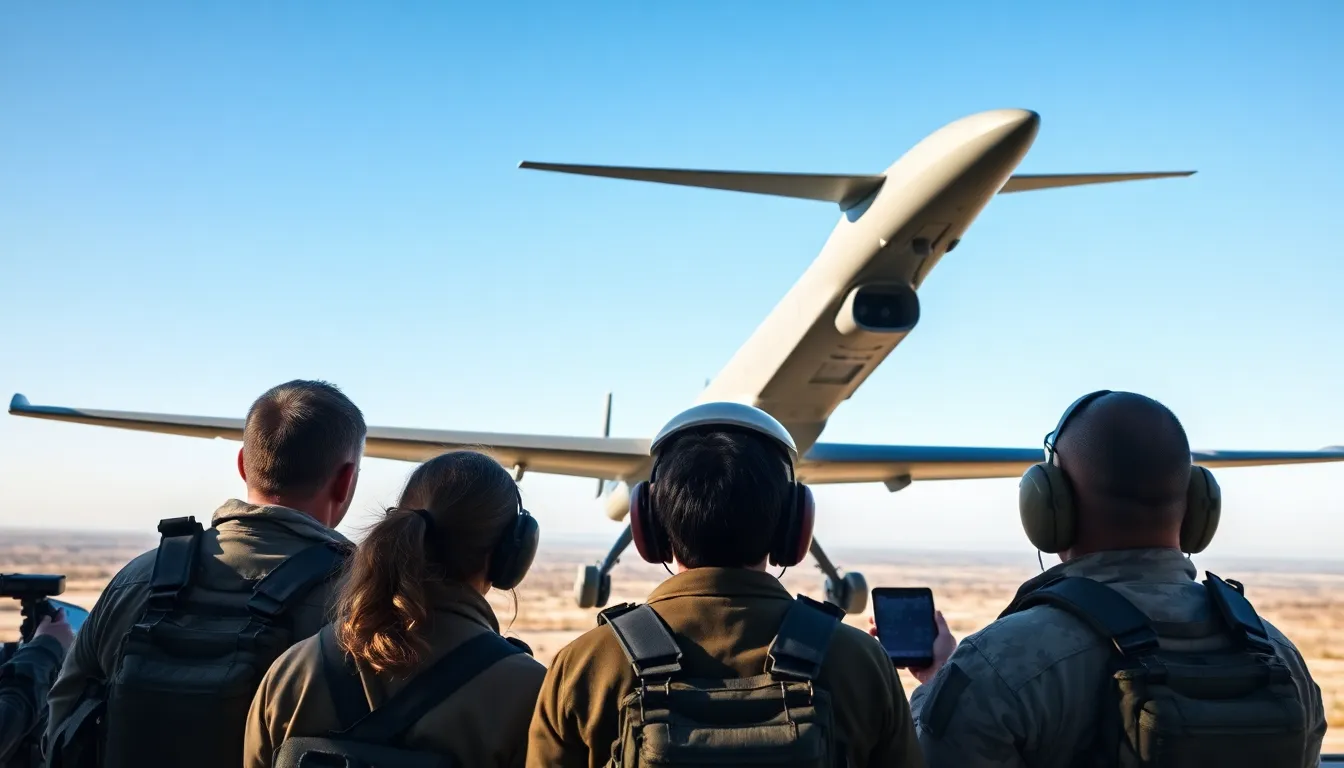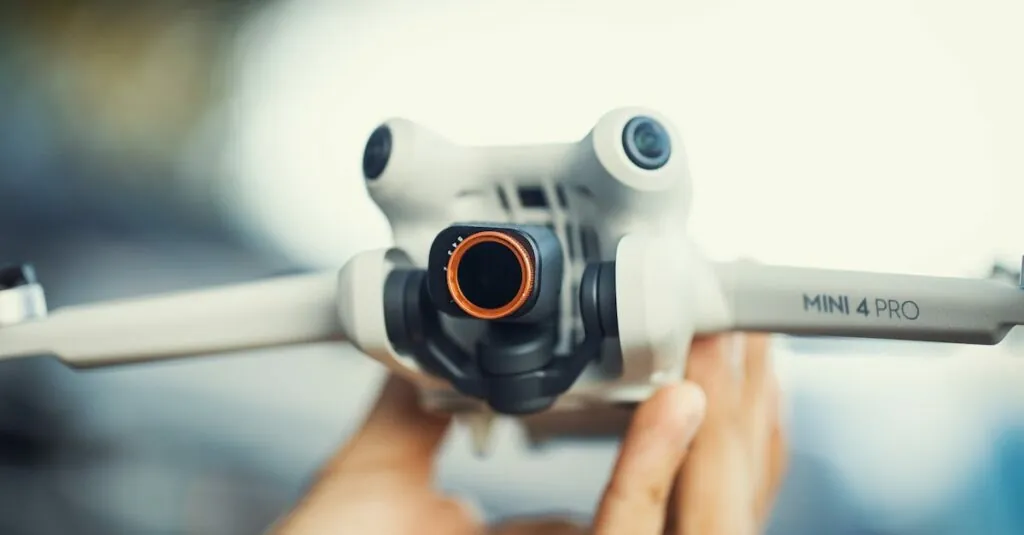Military drones are changing the face of warfare, and let’s be honest, they’re also giving remote controls a run for their money. From surveillance to combat operations, these flying machines pack a punch, and their sizes can be as varied as their missions. Ever wondered how big these aerial marvels really are? Well, buckle up, because we’re diving headfirst into the world of military drones, examining their dimensions, types, and what makes them tick.
Table of Contents
ToggleOverview of Military Drones

Military drones, also known as unmanned aerial vehicles (UAVs), are aircraft that operate without a human pilot on board. They can be controlled remotely or fly autonomously based on pre-programmed flight plans. Drones have become indispensable for modern military operations, offering capabilities such as surveillance, reconnaissance, and precision strikes. Essentially, they are the Swiss Army knives of the sky, offering a plethora of functions while keeping risk to a minimum for personnel.
With advancements in technology, military drones come in various shapes and sizes. Some are as small as a bird, designed for quick surveillance, while others are massive, outfitted with high-end equipment for complex missions.
Types of Military Drones
Understanding the different types of military drones sheds light on the roles they can play.
1. Reconnaissance Drones
These aerial scouts are often lightweight and equipped with cameras and sensors that provide real-time intelligence. With wingspans similar to that of a small plane, their size is typically around 10 to 30 feet, designed for stealth and agility.
2. Combat Drones
Combat drones, such as the MQ-9 Reaper, can be larger, with wingspans exceeding 60 feet. These drones are designed for offensive missions and can carry out airstrikes with precision, talk about aerial heavy hitters.
3. Cargo Drones
These are the supply chariots of the skies. They can carry significant payloads, often weighing several tons, and have sizes comparable to small aircraft, making it easy to transport supplies to remote locations.
4. Swarm Drones
Swarm drones can range in size but are typically much smaller than traditional drones, each measuring about 1 to 2 feet across. They operate together as a coordinated group, overwhelming targets with numbers.
Size Comparison of Common Military Drones
Diving into the specifics, let’s look at some popular military drone models and see how they stack up against each other:
1. MQ-1 Predator
Length: 27 feet
Wingspan: 48 feet
Weight: 1,000 pounds
The MQ-1 Predator, a staple in drone warfare, serves both reconnaissance and strike missions.
2. MQ-9 Reaper
Length: 36 feet
Wingspan: 66 feet
Weight: 4,900 pounds
Known for its heavy payload and long endurance, the Reaper can carry various weapons, making it a formidable tool in military operations.
3. Global Hawk
Length: 44 feet
Wingspan: 131 feet
Weight: 14,000 pounds
The Global Hawk is designed for high-altitude, long-endurance missions, primarily focusing on surveillance.
4. Raven
Length: 4.5 feet
Wingspan: 4.8 feet
Weight: 4.2 pounds
The Raven is a small reconnaissance drone that can be carried in a backpack and launched in seconds.
Factors Influencing Drone Size
One might wonder why military drones come in such diverse sizes. Several factors play a role in determining their dimensions:
1. Mission Requirements
Larger drones often carry advanced sensors or weaponry designed for offensive operations. Conversely, smaller drones are more suitable for reconnaissance, emphasizing maneuverability over firepower.
2. Payload Capacity
The weight of the necessary equipment influences overall size. A drone designed to carry significant payloads must have a sturdier and larger frame, while smaller surveillance drones can keep their weight down, opting for compact components.
3. Operational Environment
Drones operating in congested urban areas might be smaller for ease of navigation, while those conducting missions in open terrain may be larger, focusing on range and endurance.
4. Technological Advancements
As technology advances, drone designs evolve. New materials and tech enable lighter frames that can still achieve significant capabilities, allowing for a broader range of sizes.
Applications of Different Sized Drones
The varying sizes of military drones allow for specialized applications:
1. Small Drones
Ideal for tactical missions, small drones like the Raven are used for scouting and gathering intelligence without being detected.
2. Medium Drones
Drones such as the MQ-1 Predator excel in scenarios where balance is crucial, whether for surveillance or precision strikes.
3. Large Drones
The Global Hawk focuses on high-altitude missions, gathering extensive data over vast regions, making them invaluable for strategic planning.
4. Cargo Drones
Larger drones used for logistics play pivotal roles in transporting supplies to troops in remote areas, often making the difference between mission success and failure.
Future Trends in Military Drone Development
The future of military drones promises exciting developments:
1. Smarter Technology
AI and machine learning are being integrated, leading to drones that can autonomously make decisions based on real-time data.
2. Greater Autonomy
Upcoming models might reduce the need for direct human control, allowing drones to operate in complex environments with minimal oversight.
3. Hybrid Drones
Integrating capabilities of multiple types, hybrid drones could serve multifaceted roles in future military operations, combining surveillance and attack functionalities in one platform.
4. Enhanced Defense Features
Newer designs will likely include improved stealth features and defenses against electronic warfare, further enhancing survivability during missions.





